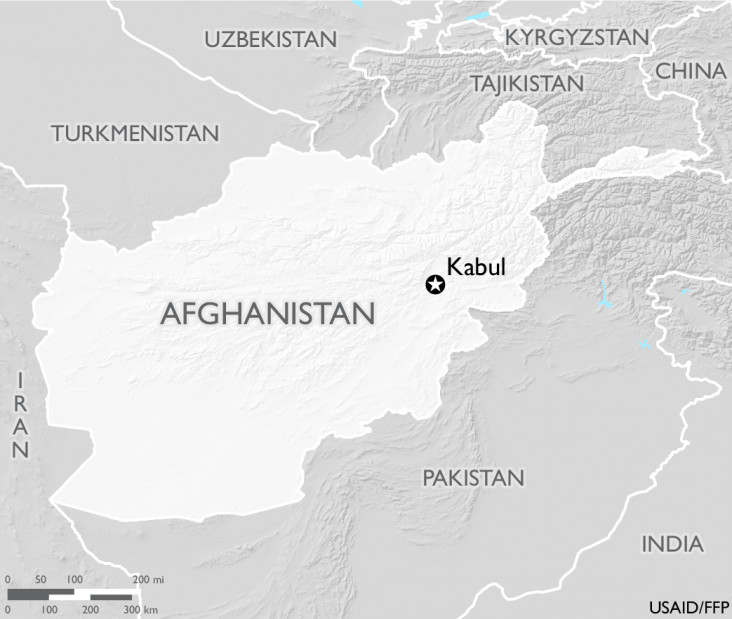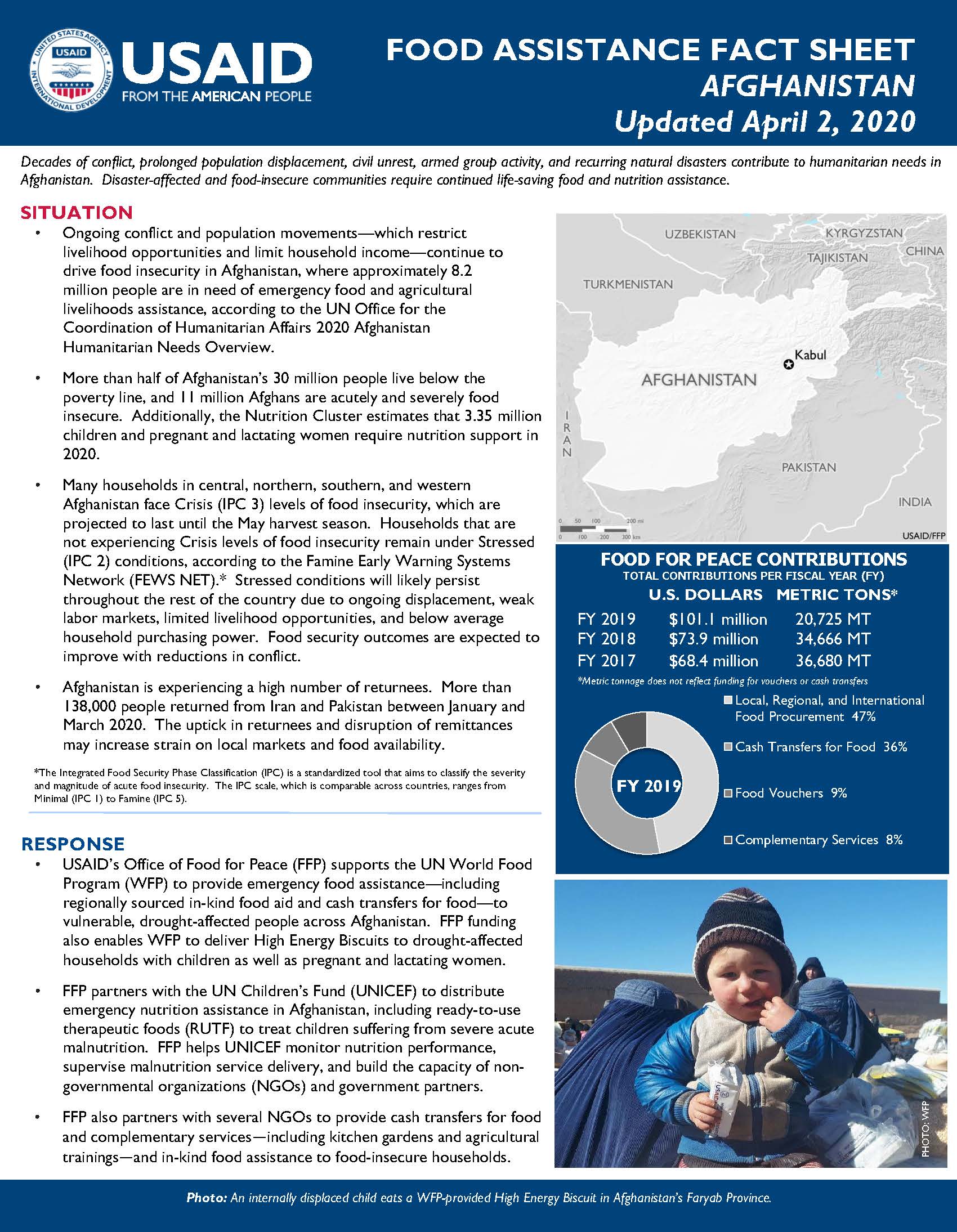Home » What We Do » Agriculture and Food Security » Food Assistance » Where We Work » Food Assistance Fact Sheet - Afghanistan
- What We Do
- Agriculture and Food Security
- Democracy, Human Rights and Governance
- Economic Growth and Trade
- Education
- Environment and Global Climate Change
- Gender Equality and Women's Empowerment
- Global Health
- Humanitarian Assistance
- Transformation at USAID
- Water and Sanitation
- Working in Crises and Conflict
- U.S. Global Development Lab
Speeches Shim

April 2, 2020
Decades of conflict, prolonged population displacement, civil unrest, armed group activity, and recurring natural disasters contribute to humanitarian needs in Afghanistan. Disaster-affected and food-insecure communities require continued life-saving food and nutrition assistance.
Situation
- Ongoing conflict and population movements—which restrict livelihood opportunities and limit household income—continue to drive food insecurity in Afghanistan, where approximately 8.2 million people are in need of emergency food and agricultural livelihoods assistance, according to the UN Office for the Coordination of Humanitarian Affairs 2020 Afghanistan Humanitarian Needs Overview.
- More than half of Afghanistan’s 30 million people live below the poverty line, and 11 million Afghans are acutely and severely food insecure. Additionally, the Nutrition Cluster estimates that 3.35 million children and pregnant and lactating women require nutrition support in 2020.
- Many households in central, northern, southern, and western Afghanistan face Crisis (IPC 3) levels of food insecurity, which are projected to last until the May harvest season. Households that are not experiencing Crisis levels of food insecurity remain under Stressed (IPC 2) conditions, according to the Famine Early Warning Systems Network (FEWS NET).* Stressed conditions will likely persist throughout the rest of the country due to ongoing displacement, weak labor markets, limited livelihood opportunities, and below average household purchasing power. Food security outcomes are expected to improve with reductions in conflict.
- Afghanistan is experiencing a high number of returnees. More than 138,000 people returned from Iran and Pakistan between January and March 2020. The uptick in returnees and disruption of remittances may increase strain on local markets and food availability.
*The Integrated Food Security Phase Classification (IPC) is a standardized tool that aims to classify the severity and magnitude of food insecurity. The IPC scale, which is comparable across countries, ranges from Minimal—IPC 1—to Famine—IPC 5.
Food Assistance Fact Sheet - Afghanistan ![]() (pdf - 508k)
(pdf - 508k)
Response
- USAID’s Office of Food for Peace (FFP) supports the UN World Food Program (WFP) to provide emergency food assistance—including regionally sourced in-kind food aid and cash transfers for food—to vulnerable, drought-affected people across Afghanistan. FFP funding also enables WFP to deliver High Energy Biscuits to drought-affected households with children as well as pregnant and lactating women.
- FFP partners with the UN Children’s Fund (UNICEF) to distribute emergency nutrition assistance in Afghanistan, including ready-to-use therapeutic foods (RUTF) to treat children suffering from severe acute malnutrition. FFP helps UNICEF monitor nutrition performance, supervise malnutrition service delivery, and build the capacity of non-governmental organizations (NGOs) and government partners.
- FFP also partners with several NGOs to provide cash transfers for food and complementary services—including kitchen gardens and agricultural trainings—and in-kind food assistance to food-insecure households.
Food for Peace Contributions
Total Contributions:
| U.S. Dollars | Metric Tons | |
|---|---|---|
| Fiscal Year 2019 | $101.1 million | 20,725 MT |
| Fiscal Year 2018 | $73.9 million | 34,666 MT |
| Fiscal Year 2017 | $68.4 million | 36,680 MT |
* Metric tonnage does not reflect funding for vouchers or cash transfers.


Comment
Make a general inquiry or suggest an improvement.